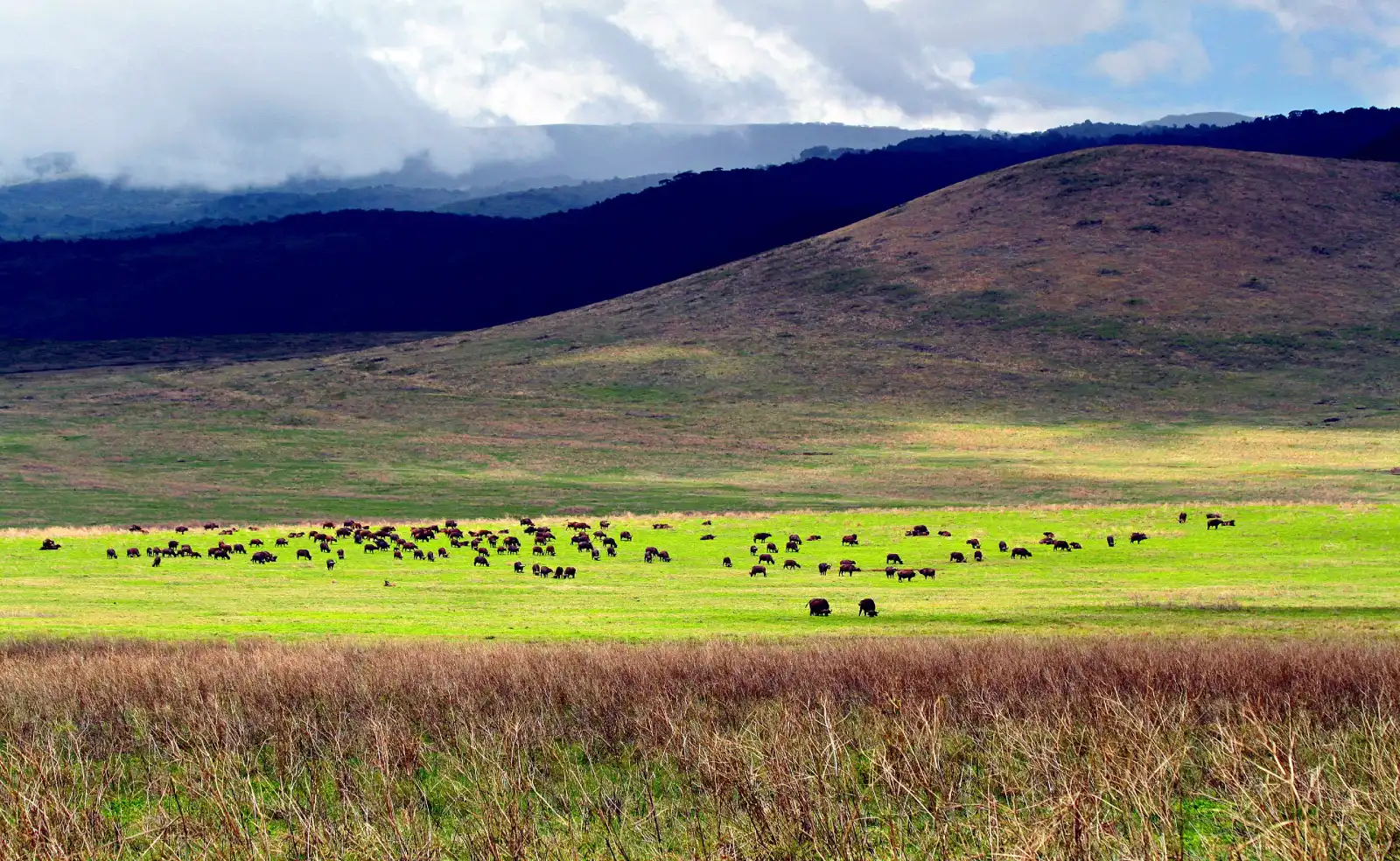Ngorongoro Crater

A massive collapsed volcanic caldera now teeming with African biodiversity.
Place overview
The Ngorongoro Crater is the world's largest inactive, intact and unfilled volcanic caldera. It was formed when a large volcano erupted and collapsed on itself two to three million years ago, is 610 meters (2,000 feet) deep and its floor covers 260 square kilometers (100 square miles).
Estimates of the height of the original volcano range from 4,500 to 5,800 meters (14,800 to 19,000 feet) high. Based on fossil evidence found at the Olduvai Gorge, various hominid species have occupied the area for 3 million years.
Ngorongoro Crater's features a vast region of highland plains and savanna. It's biodiversity is mainly ungulates, some of the main animals in the crater include: black rhinoceros, african buffalo, hippopotamus, blue wildebeest, grant's zebra, eland, grant's gazelle, thomson's gazelle, waterbuck and elephant. There are also some predators, such as cheetahs, african wild dogs, leopards, and spotted hyenas. Some species are absent, including giraffe, impala, topi, oribi, and crocodile. Lake Magadi, a large lake in the southwest of the crater, is often inhabited by thousands of mainly lesser flamingoes Some species are absent, such as the giraffe, impala, topi, oribi, and crocodile.
As for predators, they are less common but include lions, cheetahs, african wild dogs, servals, and leopards. Spotted hyenas have been the subject of long-term research since 1996.
The crater is part of the Ngorongoro Conservation Area which is a protected area and a UNESCO World Heritage Site.
Learn more about Ngorongoro CraterView places in the same country
Gallery
View the source gallery here: Ngorongoro Crater Wikimedia
